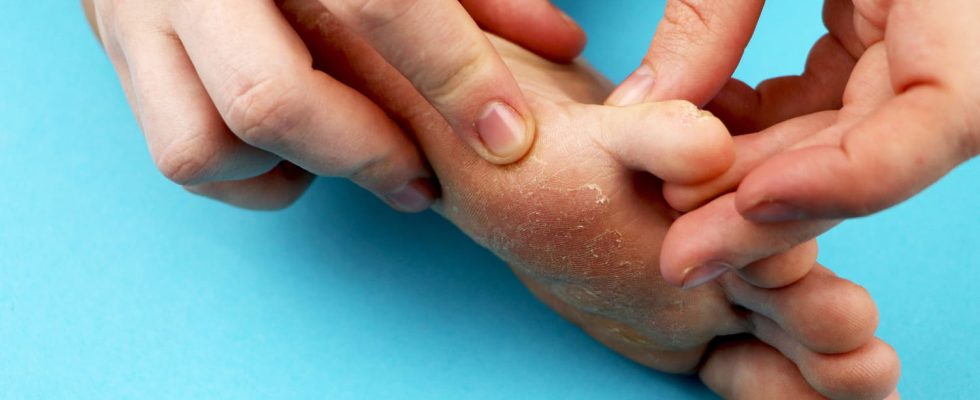Even with effective treatment, mycosis (skin, vaginal, foot) can recur. How to treat it? With an egg? Probiotics? How to avoid a second yeast infection?
A second mycosis or a recurring yeast infection is frequent. How do you know if a yeast infection is coming back? Why does she not leave despite the treatment? How to overcome a recurrent mycosis? How to treat a recurrent mycosis?
What are the risks of recurrence after mycosis?
In the case of vaginal mycoses, recurrences are very frequent: 1 out of 2 mycosis will recur.
Who are the people at risk of recurrence?
► Newborns, infants and babies. The hyper fragile skin of babies is sometimes exposed to thrush andnappy rashcases of cutaneous mycoses.
► Children. Ringworm primarily targets children 3 to 12 years of age.
► Athletesmore prone to nail and foot fungus.
► Women can at any time catch a vaginal yeast infection and seniors a thrush.
► people with diabetes
► Patients on antibiotics
► Subjects with weak immune defenses (HIV, cancer, immunosuppressive treatments or chemotherapy) are more exposed.
In case of pityriasis versicolor:
- Eliminate synthetic clothing that prevents the evaporation of sweat
- Avoid saunas
- Do not apply oils on the body because this fungus has a great affinity for fatty substances.
In case of mycosis between the toes (foot): “it is important to follow the treatment prescribed by the doctor for the entire duration indicated, treat the shoes with an antifungal powder, treat the nails in the event of nail damage”, recalls Dr. Delphine Eyraud, dermatologist in Suresnes. Prevention :
- Do not walk barefoot in hot and humid places
- Dry yourself properly between your toes after washing
- Wear cotton socks, leather or open shoes whenever possible, breathable sports shoes…
- Detect and treat skin or nail mycosis in other family members.
To avoid recurrence, doctors recommend a few lifestyle and dietary rules:
- Wear cotton underwear (rather than synthetic), washable at 60°C because only a high washing temperature can eliminate Candida albicans type fungi.
- Do not wear tight clothing to promote free air circulation and avoid maceration.
- During personal hygiene and on a daily basis, do not carry out disinfectant baths, vaginal douches, and ban the use of perfumed soaps and other sprays for intimate use. It is advisable to use a gentle intimate hygiene product, rather with an alkaline (basic) pH to help maintain and restore the vaginal flora as quickly as possible.
- The use of lubricants during sexual intercourse reduces the risk of mechanical damage to the vaginal wall and therefore reduces the risk of abnormal proliferation of microorganisms in these areas.
- When swimming (in the pool or seawater) it is advisable to rinse with clear water as quickly as possible and not to keep a wet swimsuit.
- Tampons are risk factors for the development of fungal infections. Prefer sanitary napkins to be changed very regularly.
What is the treatment for recurrent yeast infection?
In the dietary recommendations against recurrences, certain molecules are proposed: these are probioticsthese products are composed bacteria or even “protective” fungi. “You can also prescribe local antifungal drugs (ovules) or oral (capsules)most often with a monthly rhythm, for several months, targeting the date of the recurrence as best as possible (often at the end of the cycle)”, continues the doctor. If yeast infections occur frequently following antibiotic treatment, a vaginal egg can be prescribed for prevention during drug treatment.
Thanks to Dr Delphine Eyraud, dermatologist in Suresnes (92).
